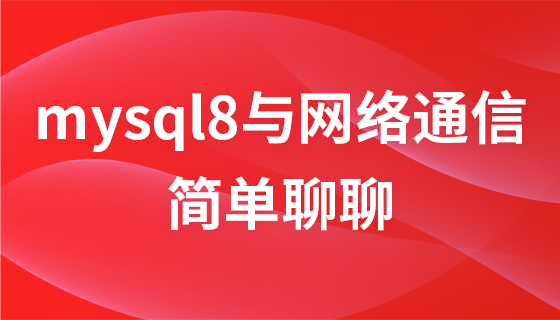Golang 中如何使用 Channels 进行进程间通信
时间:2023-08-20 12:26:49 128浏览 收藏
本篇文章给大家分享《Golang 中如何使用 Channels 进行进程间通信》,覆盖了Golang的常见基础知识,其实一个语言的全部知识点一篇文章是不可能说完的,但希望通过这些问题,让读者对自己的掌握程度有一定的认识(B 数),从而弥补自己的不足,更好的掌握它。
Golang 中如何使用 Channels 进行进程间通信
进程间通信(Inter-Process Communication,IPC)是计算机科学中的一个重要概念,用于在多个进程之间传递信息和共享数据。Golang(Go语言)内建了一种轻量级的并发模型——goroutine 和 channel,使得进程间通信变得简单而高效。本文将介绍 Golang 中如何使用 channels 来进行进程间通信,并提供代码示例。
- 创建和使用 Channel
在 Golang 中,channel 是一种特殊的数据类型,用于在 goroutine 之间传递数据。我们可以使用 make 函数来创建一个 channel,并通过 <- 操作符来发送和接收数据。下面是创建和使用 channel 的基本示例:
package main
import "fmt"
func main() {
// 创建一个可以传递整数的channel
ch := make(chan int)
// 启动一个 goroutine,将数字发送到 channel
go func() {
ch <- 42 // 发送 42 到 channel
}()
// 从 channel 接收数据并打印
fmt.Println(<-ch) // 输出:42
}在上面的示例中,我们创建了一个整数类型的 channel,并使用 go 关键字启动了一个匿名的 goroutine。在 goroutine 内部,我们通过 ch <- 42 将数字 42 发送到 channel。在 main 函数中,我们使用 <-ch 语法从 channel 接收数据,并将其打印出来。
- 阻塞和非阻塞通信
Channel 的发送和接收操作都是阻塞的。当我们使用 <- 向 channel 发送数据时,如果 channel 已满,则发送操作将被阻塞,直到有其他 goroutine 从 channel 中接收数据。同样地,当我们使用 <- 从 channel 接收数据时,如果 channel 为空,则接收操作将被阻塞,直到有其他 goroutine 向 channel 发送数据。
我们可以通过使用 default 语句来实现非阻塞通信,即使 channel 已满或为空。下面的示例演示了阻塞和非阻塞通信的差异:
package main
import "fmt"
func main() {
ch := make(chan int, 1) // 创建一个容量为 1 的 channel
// 阻塞通信
ch <- 42 // 发送数据到 channel,此时 channel 已满,发送操作被阻塞
fmt.Println(<-ch) // 从 channel 接收数据并打印,输出:42
// 非阻塞通信
select {
case ch <- 42: // 尝试发送数据到 channel,因为 channel 已满而无法发送,选择 default 语句执行,不会被阻塞
fmt.Println("Data sent to channel")
default: // default 语句
fmt.Println("Channel is full, data not sent")
}
select {
case data := <-ch: // 尝试从 channel 接收数据,因为 channel 为空而无法接收,选择 default 语句执行,不会被阻塞
fmt.Println("Data received from channel:", data)
default: // default 语句
fmt.Println("Channel is empty, no data received")
}
}在上面的示例中,我们首先创建了一个容量为 1 的 channel。在阻塞通信的部分,我们首先向 channel 发送了数字 42,然后立即从 channel 接收数据并打印。由于 channel 的容量为 1,所以发送操作会一直阻塞,直到数据被接收。
在非阻塞通信的部分,我们使用 select 语句来选择可执行的 case。在第一个 select 语句中,我们尝试向 channel 发送数据,但由于 channel 已满无法发送,所以选择了 default 语句执行。在第二个 select 语句中,我们尝试从 channel 接收数据,但由于 channel 为空无数据可接收,所以同样选择了 default 语句执行。
- 使用 Channel 实现生产者-消费者模式
生产者-消费者模式是一种常见的并发模型,其中生产者将数据放入一个共享的缓冲区,消费者则从缓冲区中提取数据。在 Golang 中,我们可以使用 channel 来实现这一模式。下面是一个生产者-消费者模式的示例:
package main
import "fmt"
func Producer(ch chan<- int) {
for i := 0; i < 5; i++ {
ch <- i // 将数据发送到 channel
}
close(ch) // 关闭 channel
}
func Consumer(ch <-chan int) {
for data := range ch {
fmt.Println("Consumed:", data) // 从 channel 接收数据并打印
}
}
func main() {
ch := make(chan int) // 创建一个 channel
go Producer(ch) // 启动生产者 goroutine
Consumer(ch) // 在当前 goroutine 中执行消费者逻辑
}在上面的示例中,我们定义了两个函数 Producer 和 Consumer。Producer 函数将数字发送到 channel,在 for 循环中,它将数字依次发送到 channel 中,并在发送完毕后通过 close 关闭 channel。Consumer 函数从 channel 中接收数据,并在一个无限循环中通过 range 来不断接收 channel 中的数据。range 在 channel 被关闭后会自动终止循环。
在 main 函数中,我们创建了一个 channel,并使用 go 关键字启动了一个 Producer 的 goroutine,然后在当前 goroutine 中执行 Consumer 的逻辑。这样,生产者和消费者就可以并发地执行,并通过 channel 实现了数据的传递和同步。
通过使用 Golang 中的 channels,我们可以轻松地实现进程间通信。无论是阻塞通信还是非阻塞通信,Golang 中的 channels 都能很好地满足我们的需求。并且,它们提供了一种简单而高效的方式来实现生产者-消费者模式。希望本文能帮助读者更好地理解和应用 channels 进行进程间通信。
参考资料:
- [The Go Programming Language Specification - Channels](https://golang.org/ref/spec#Channel_types)
- [Golang Channels Tutorial](https://golangbot.com/channels/)
代码示例可在 [Github](https://github.com/...) 上找到。
终于介绍完啦!小伙伴们,这篇关于《Golang 中如何使用 Channels 进行进程间通信》的介绍应该让你收获多多了吧!欢迎大家收藏或分享给更多需要学习的朋友吧~golang学习网公众号也会发布Golang相关知识,快来关注吧!
-
505 收藏
-
503 收藏
-
502 收藏
-
502 收藏
-
502 收藏
-
118 收藏
-
189 收藏
-
232 收藏
-
269 收藏
-
269 收藏
-
316 收藏
-
122 收藏
-
456 收藏
-
330 收藏
-
181 收藏
-
299 收藏
-
350 收藏
-

- 前端进阶之JavaScript设计模式
- 设计模式是开发人员在软件开发过程中面临一般问题时的解决方案,代表了最佳的实践。本课程的主打内容包括JS常见设计模式以及具体应用场景,打造一站式知识长龙服务,适合有JS基础的同学学习。
- 立即学习 543次学习
-

- GO语言核心编程课程
- 本课程采用真实案例,全面具体可落地,从理论到实践,一步一步将GO核心编程技术、编程思想、底层实现融会贯通,使学习者贴近时代脉搏,做IT互联网时代的弄潮儿。
- 立即学习 516次学习
-

- 简单聊聊mysql8与网络通信
- 如有问题加微信:Le-studyg;在课程中,我们将首先介绍MySQL8的新特性,包括性能优化、安全增强、新数据类型等,帮助学生快速熟悉MySQL8的最新功能。接着,我们将深入解析MySQL的网络通信机制,包括协议、连接管理、数据传输等,让
- 立即学习 500次学习
-

- JavaScript正则表达式基础与实战
- 在任何一门编程语言中,正则表达式,都是一项重要的知识,它提供了高效的字符串匹配与捕获机制,可以极大的简化程序设计。
- 立即学习 487次学习
-

- 从零制作响应式网站—Grid布局
- 本系列教程将展示从零制作一个假想的网络科技公司官网,分为导航,轮播,关于我们,成功案例,服务流程,团队介绍,数据部分,公司动态,底部信息等内容区块。网站整体采用CSSGrid布局,支持响应式,有流畅过渡和展现动画。
- 立即学习 485次学习
